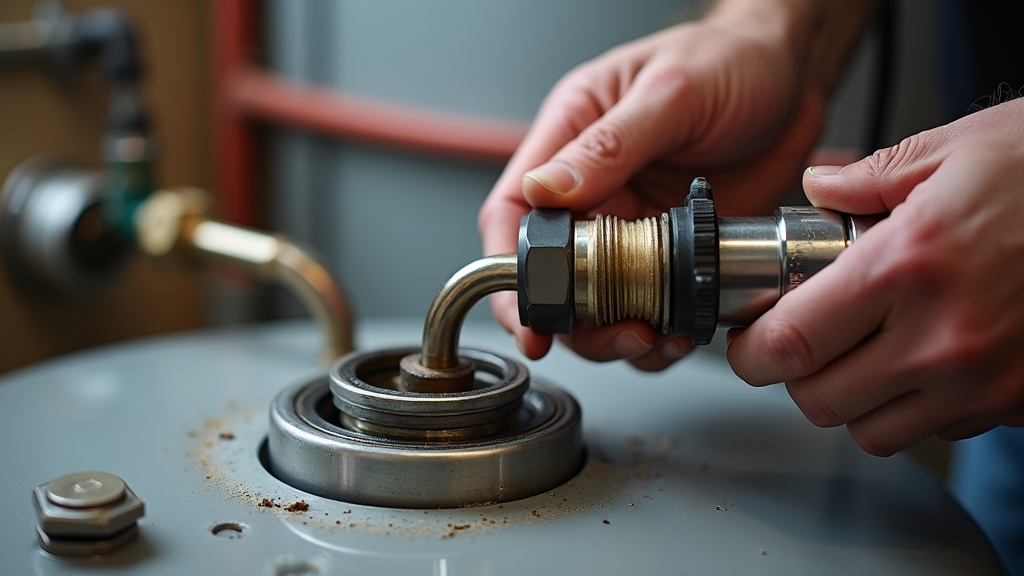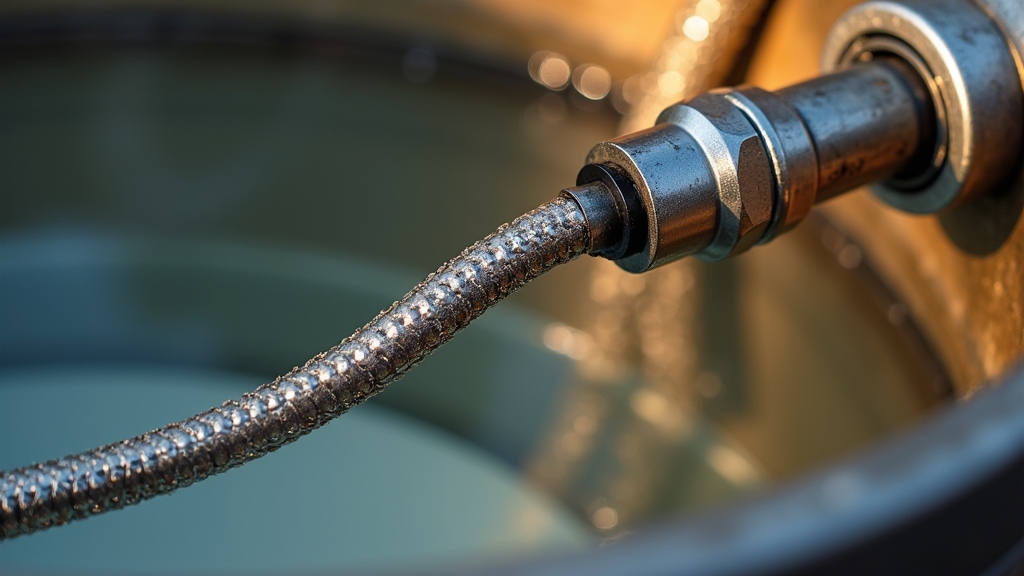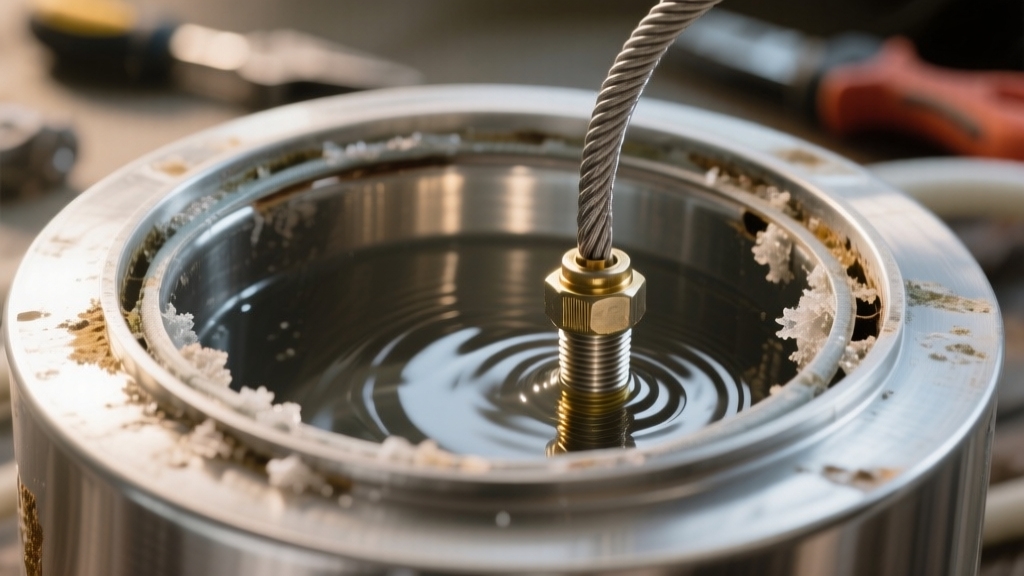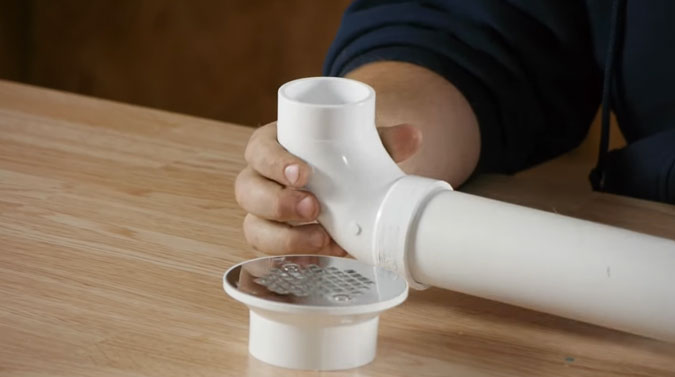Yes, powered anode rods work by actively preventing water heater corrosion through an applied electric current that reverses oxidation at the tank’s interior surfaces. Unlike sacrificial rods, they don’t degrade, offering longer-lasting, reliable protection and reducing maintenance needs.
Their performance depends on a continuous power supply and proper installation. If you want to understand their specific advantages, installation details, and economic impact, exploring these aspects will provide deeper insight into their effectiveness.
Key Takeaways
- Powered anode rods actively prevent corrosion by creating an electric field that inhibits oxidation in water heater tanks.
- They last up to 50 years without degrading, unlike sacrificial rods that require replacement every 1-2 years.
- Continuous power supply is essential for effective corrosion protection; interruption stops the protective process.
- They reduce tank contamination and sediment buildup, improving water quality and extending heater lifespan.
- Proven effective in harsh water conditions and recommended for electric water heaters with proper professional installation.
How do Powered Anode Rods Prevent Corrosion?
While traditional anode rods rely on sacrificial metal to corrode and protect the tank, powered anode rods actively prevent corrosion by applying a direct electrical current. Powered anode rods use electricity instead of sacrificial metal to actively stop tank corrosion.
You connect the rod to an external power source, which drives current from the rod to the water heater tank, making the tank the cathode in this electrochemical setup. This impressed current reverses electron flow, inhibiting oxidation and creating a protective electric field that shields the tank’s metal from corrosion.
The rods, made from inert materials like titanium, resist oxidation and don’t degrade over time. You must maintain a continuous power supply since interruption halts protection. Additionally, the system often includes current control and monitoring to confirm optimal corrosion inhibition tailored to your tank’s size and condition.
For maintenance or inspection, ensure the system is powered down safely and to follow disassembly procedures recommended by the manufacturer. Powered anode rods provide longer-lasting protection compared to traditional sacrificial anodes, significantly extending the lifespan of your water heater.
Advantages Compared to Traditional Sacrificial Rods
Because powered anode rods operate without degrading, they offer distinct advantages over traditional sacrificial rods in aspects of longevity, durability, and maintenance requirements.
Unlike magnesium or aluminum rods consumed over 1 to 2 years, powered anodes can last up to 50 years, substantially reducing replacement frequency. Their corrosion resistance outperforms that of sacrificial rods, making them more reliable in the long term.
They maintain consistent corrosion protection across diverse water chemistries, including softened or high-chlorine water, where sacrificial rods erode rapidly. You’ll benefit from minimized tank contamination due to the absence of corrosion byproducts like aluminum hydroxide.
Maintenance demands drop considerably since powered rods require no periodic replacement. Additionally, these rods mitigate sediment buildup, improving tank cleanliness and longevity.
Although initially costlier, their extended service life and broad compatibility make them a cost-effective, durable solution that outperforms traditional sacrificial rods in operational stability and water heater protection. Powered anodes use smart technology to send electric pulses, which prevents the wear that sacrificial rods experience over time.
Installation Requirements and Operational Factors

When installing powered anode rods, you must guarantee a continuous electrical connection, typically sourced from a standard 120V outlet. Carefully manage wiring to maintain dry, secure connections that prevent electrical hazards. Use a non-contact voltage tester to confirm no electricity is present before starting installation to ensure safety.
Begin by partially draining the tank and removing the old rod. Wrap Teflon tape on the powered rod’s threads to ensure a watertight seal. Then hand-insert and tighten without overtightening to avoid damage.
Connect the designated red (anode) and green (ground) wires firmly under screws on the heater jacket. Confirm compatibility with your water heater model, as some require special fittings or grounding accommodations. Proper installation also helps prevent electrical shorts that could impair the system.
After installation, restore water and power. Then check for leaks and verify indicator lights confirm operation. Ensure wiring routes avoid moisture and interference, maintaining safety and system integrity during continuous operation.
Economic Benefits and Maintenance Considerations
Having guaranteed proper installation and operation of your powered anode rod, it’s important to evaluate the economic benefits and maintenance demands these devices introduce.
Powered anode rods extend water heater lifespan considerably, reducing replacement and repair costs. Despite higher initial costs, they offer overall savings through durability and reduced maintenance. In particular, the increasing adoption of energy-efficient anode rods is driving market growth and enhancing cost-effectiveness.
Proper installation and regular inspection are essential to prevent reverse-flow damage and ensure optimal performance. Maintenance shifts focus from physical rod replacement to electrical system checks.
Key points to contemplate:
- Extended lifespan up to 20+ years lowers long-term capital expenses.
- Minimal maintenance needed, mainly power supply and control unit inspections.
- Negligible energy consumption adds minimal operational cost.
- Corrosion prevention reduces sediment buildup, improving water quality and lowering downstream maintenance.
This analytical approach highlights powered anode rods and streamlined upkeep compared to traditional rods.
Ideal Applications and Suitability of Powered Anode Rods

Although powered anode rods offer advanced corrosion protection, their suitability depends on several factors including water heater type, water quality, and electrical infrastructure. Regular maintenance is essential to prevent issues like mineral scale buildup that can affect performance.
You’ll find them most compatible with electric water heaters designed for external power connections, often requiring professional installation. Their effectiveness excels in harsh water conditions, high mineral content, well water variability, or coastal salt air, where traditional rods underperform.
Powered anode rods generate a protective field without being consumed, unlike traditional sacrificial rods. Powered rods actively mitigate corrosion without degrading, reducing sulfur odors and metallic tastes.
They suit residential and commercial systems demanding long-term protection with minimal maintenance, especially in environments with anaerobic bacteria. However, you must ascertain continuous electrical supply and compliance with local codes.
Installation complexity and compatibility with older or gas heaters can limit use, so professional consultation is critical before adopting powered anode technology.
Frequently Asked Questions
Can Powered Anode Rods Cause Electrical Interference With Other Home Devices?
Powered anode rods generally don’t cause electrical interference with your home devices if installed correctly. They use a low, well-regulated current that produces minimal electromagnetic noise. However, improper grounding or faulty wiring could create interference issues.
To avoid problems, you should guarantee professional installation and proper grounding. If you notice interference, it’s more likely due to installation errors or equipment faults rather than the rod’s normal operation.
What Safety Measures Exist if the Powered Anode Rod Malfunctions?
Think of the powered anode rod as a vigilant guardian with built-in fail-safes. If it malfunctions, it often shuts off automatically, especially when the water heater is empty, preventing electrical hazards. You should regularly check electrical connections and perform inspections to catch issues early.
Always follow installation guidelines precisely and let qualified technicians handle repairs, ensuring the system’s integrity and your safety remain intact without risking shocks or fires.
Are Powered Anode Rods Compatible With All Water Heater Brands?
Powered anode rods aren’t universally compatible with all water heater brands. Most residential tanks with standard anode ports can accommodate them, but you’ll need to verify your heater’s specifications, port size, and electrical access beforehand.
Some brands might require adapters or modifications. For RV models, compatibility mainly covers Suburban, Mor-Flo, and Atwood units.
Can Powered Anode Rods Be Used in Well Water Systems With Variable Quality?
Like a vigilant sentinel, powered anode rods actively protect well water systems with variable quality by delivering continuous electrical corrosion control. You’ll find they reduce odors and discoloration common in unpredictable well water, lasting markedly longer than sacrificial rods.
However, you need to guarantee proper installation, continuous power supply, and monitor electrical functionality. Pairing them with filtration may optimize performance, especially under aggressive water chemistry conditions.
Perfect Fit for Modern Systems Needing Consistent Corrosion Defense
You’ll find that powered anode rods act like a vigilant guardian, actively preventing corrosion by using an electrical current instead of sacrificing metal. Compared to traditional rods, they offer a longer lifespan and consistent protection with less maintenance.
While installation requires careful attention to electrical compatibility, the economic benefits often outweigh initial costs. For systems demanding durable, low-maintenance corrosion control, powered anode rods provide a precise, efficient solution tailored to your needs.


